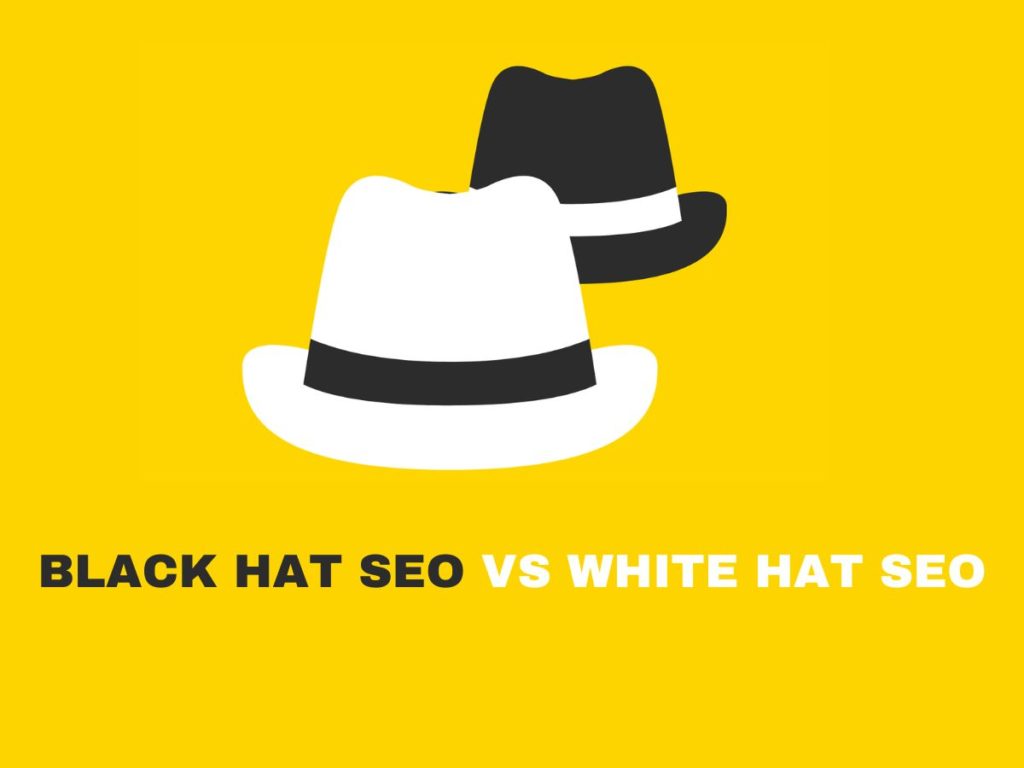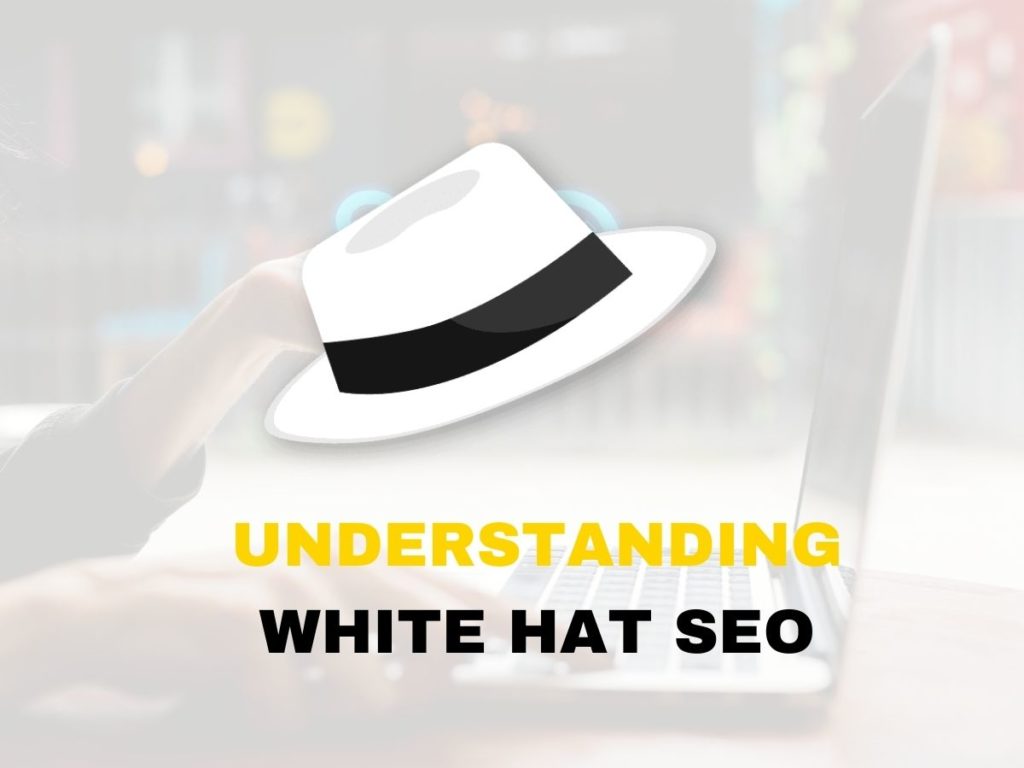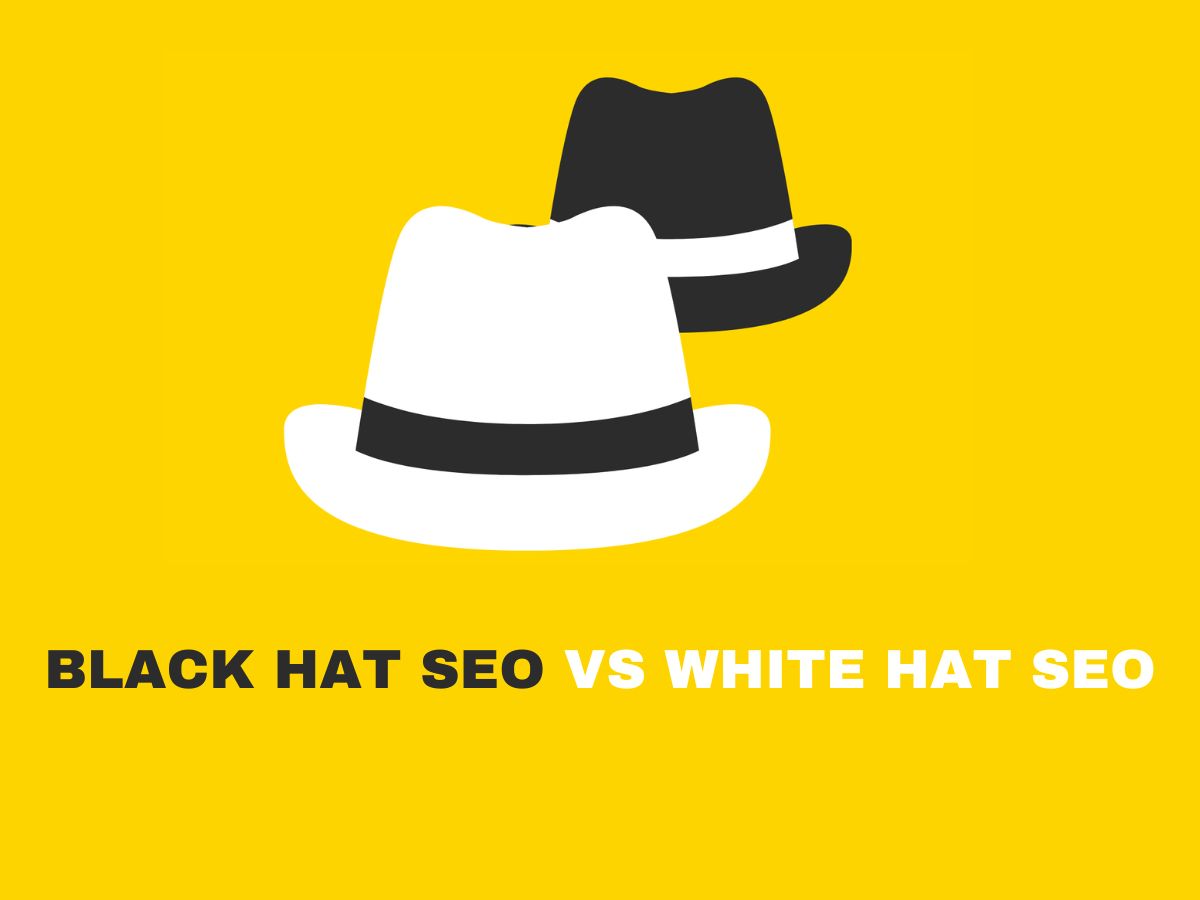
Search engine optimization (SEO) refers to the strategies and techniques used to increase the number of visitors to a website by obtaining higher rankings in search engine result pages. Proper implementation of SEO leads to more visibility and traffic from people using search engines like Google and Bing to find information online.
SEO is important for businesses and websites looking to reach new audiences and drive growth. High rankings in search engines lead to increased site traffic, more awareness about a brand or product, and more potential sales and conversions of visitors into customers. As more people now use search engines like Google as the starting point of their journeys online, SEO helps ensure visibility and discoverability.
However, there exist questionable approaches to SEO that can undermine optimization success or even jeopardize website status and accessibility. These highly risky tactics are known as Black Hat SEO. By contrast, White Hat SEO promotes safe and thoughtful optimization aligned with search engine guidelines for ethical, sustainable results that are not at risk of penalties. This essay will explore the differences between these two approaches more deeply.
Understanding Black Hat SEO
A. Black Hat SEO refers to unethical optimization tactics that violate search engine guidelines in order to manipulate rankings and achieve higher positions. The term originated in the 1990s as some webmasters started promoting websites through questionable means.
Common Black Hat SEO techniques include
Keyword stuffing involves overloading web content with certain keywords in an unnatural density to trick algorithms. For example, repetitively stuffing “cheap shoes” throughout an e-commerce site selling shoes.
- Cloaking – Displaying content or URLs to search engines is different from what human visitors see. The “cloaked” pages displayed to search bots aim to improve crawling and indexing, which do not match the real user experience.
- Hidden text and links – Inserting text matching desired keywords or site links that are invisible to users, often in white fonts on white backgrounds or using CSS coding tricks. This manipulates relevance signals.
- Doorway pages – Creating low-quality pages optimized solely to rank for specific keywords without any unique purpose beyond manipulation. They misleadingly funnel users.
- Private Blog Networks (PBNs) – Networks of sites and blogs built to link back to one site rapidly without reasonable justification to boost rankings quickly.
- Link farming – Manual or automated creation of an unnaturally high number of site backlinks not representing credible signals of value to manipulate PageRank flow.
Dangers and risks of Black Hat SEO include
- Penalties from search engines – Tactics violating guidelines can lead to loss of organic traffic, lower rankings, or complete removal from indexes.
- Decreased credibility and trust – Unethical practices undermine reputation over time, especially if exposed publicly or flagged as spam.
- Potential de-indexing or banning – Repeated or severely manipulative offenses can cause search engines to no longer list the site.
- Long-term negative impact – Recovery from manual penalties can be extremely difficult. Even after changes, the site may suffer from a lasting “toxic” label.
Tactics and techniques used
1. Keyword stuffing – This involves repeatedly saturating page content with target keywords to manipulate search engine relevance signals. For example, working the phrase “cheap shoes online” into paragraph text unnaturally often. This can lower quality and readability.
2. Cloaking – Displaying one version of a webpage to search crawler bots to improve indexing while showing human visitors something different. The crawler page may promise content or offerings that the real site does not have. This deceives search engines about page purpose.
3. Hidden text and links – Using coded techniques like white text on white backgrounds or very small text to insert keywords or site links that are invisible to human visitors but still detected by bots crawling the page. This artificially inflates optimization factors.
4. Doorway pages – Creating low-value pages optimized solely for ranking well in search listings to funnel visitors into a sales funnel. These offer no unique value beyond manipulation.
5. Private Blog Networks (PBNs) – Construct large networks of fake blogs and sites to link back to one site rapidly, artificially establishing domain authority for higher rankings by simulating trusted backlinks at scale.
6. Link farming – Employing automated tools or low-paid manual laborers to generate a highly unnatural quantity and pace of site backlinks across the web to one’s site, misleading search engines about popularity and relevance. This is done heedless of quality.
Risks and consequences
1. Penalties from search engines (Google, Bing, etc.)
Google, Bing, and other search engines aggressively monitor websites engaging in practices that violate their guidelines. They have advanced algorithms to detect many forms of manipulation. Getting hit with a penalty includes reduced rankings, traffic loss, and removal from search results. Google, in particular, is known for harsh punishments through continual algorithm updates. Manual human reviewers at Google also issue penalties for egregious spam sites.
The levels of penalties typically involve loss of visibility and removing some or all search site traffic referred from the engine. Manual SPAM warnings directly in Google listings are also possible. Most seriously, getting blacklisted and permanently banned from the search engine also occurs in chronic cases.
2. Decreased credibility and trust
The shortcuts of Black Hat SEO deliver only temporary boosts while eroding brand reputation over time once exposed. Since the tactics aim to trick search engines and users, the unethical nature decreases audience trust. For example, stuffing keywords into text in a jarring, unnatural way or cloaking true business offerings harms credibility. Fewer visitors may refer others or return as customers themselves.
3. Potential de-indexing or banning of website
In severe cases, after multiple violations of policies, search engines move to completely remove the harmful website from their index listings per their guidelines. This means a total loss of ability to rank or have any pages found in search queries. Sites continuing manipulative links also risk potential IP address blocking. Both outcomes terminate all SEO visibility.
4. Long-term negative impact on online presence
Black Hat SEO delivers only temporary gains but, in the long run, devastates search visibility forever after penalties and distrust. There are often permanent “toxic backlink” labels attached to the site’s domain from past spam link histories that new owners must attempt to overcome with time and effort. The lasting stigma harms the website for a prolonged period.
Understanding White Hat SEO

Definition and principles
White Hat SEO refers to safe, thoughtful search optimization practices aligned with ethical standards and the guidelines of search engines themselves. The focus lies in building quality sites that satisfy visitors through great content while helping search bots effectively crawl and rank pages. White hat follows enduring best practices for discoverability.
Its core principles include transparency, relevance, good user experience, and long-term sustainable tactics that rely on human quality signals rather than manipulating purely numeric metrics. Play by the rules set out by search engines. Design sites for people first while also being mindful of optimizing opportunities.
Ethical tactics and techniques
Here are some ethical tactics and techniques to look into –
- High-Quality Content Creation – Developing pages, blogs, videos, and other media focused on being genuinely useful, engaging resources around topics that match searcher intent. This earns trust and sharing.
- Proper Keyword Research and Optimization – Through studying search data trends to align page topics and embedding keywords within natural writing in a thoughtful, editorially sound manner. This matches queries without awkward overuse.
- On-page Optimization – Judiciously crafting page titles, descriptions, headings, URLs, structured data, and more to help search bots accurately interpret page content without stuffing or “keyword cannibalization” across pages.
- Quality Link Building – Slowly establish relevant high-authority contextual backlinks from trusted places through personal outreach and relationship building over time without shady automated tactics. Each link has merit on its own through the site’s merit.
- User Experience Optimization – Enhancing all aspects of site UX beyond just copy, such as site speed, mobile responsiveness, easy navigation, effective visuals, and accessibility. This serves visitors and, in turn, boosts rankings signals by keeping people engaged.
- Transparent & Honest Practices – Signal all commercial interests, such as affiliate links, rather than cloaking sponsorships and never deceiving visitors. Tactics match what is publicly shared rather than using any trickery.
Benefits and advantages
- Long-term Sustainable Results – White hat focuses on establishing true authority and relevance in search algorithms built on ethical quality signals, earning durable prominence.
- Positive Reputation and Trustworthiness – The transparent and honest nature of practices establishes credibility over competitors engaging in shady tactics, earning recommendations.
- Higher Rankings in Search Engines – Google and Bing reward sites for satisfying both visitors and their crawlers through editorial merit and wise technical SEO execution.
- Improved User Experience – The holistic perspective improves all UX dimensions, like mobile pages and site speed, increasing visitor engagement. This lifts conversion rates over time while protecting rankings through audience satisfaction signals back to search engines.
Comparison: Black Hat SEO vs White Hat SEO
- Tactics and techniques – Black Hat employs deceptive shortcuts like keyword stuffing, cloaking, hidden text/links, and private blog networks and exploits automation for fast results. White Hat focuses on high-quality content, thoughtful optimization following guidelines, and ethical user experience considerations for organic growth.
- Risks and consequences – Black Hat risks penalization, banning, and long-term negative impacts from tactics violating engine guidelines. White Hat faces no policy enforcement risks and instead sees positive reputation gains plus sustainable results from building sites properly with end users in mind first.
- Effectiveness and sustainability – Black Hat may temporarily manipulate specific metric gains but at the cost of user experience and will likely result in serious declines in the long run after penalization. White Hat sees slower study rankings growth in a positive direction and is more resistant to algorithm shifts based on ethical signals of quality content.
- Ethical considerations – Black Hat pursues a “by any means necessary” approach heedless of collateral damage from deceiving engines and readers. White Hat appreciates search engines’ roles, avoiding violating standards they set while crafting excellent sites benefitting visitors first in transparent ways that engines can accurately reward.
- Examples and case studies – Well-known brands have seen consequences sinking rankings through excessive ad-buying approaches (Forbes) or over-aggressive linking schemes (BMW) verging into Black Hat territory and violating standards. White Hat examples show reputable publishers focusing on genuine value for readers seeing sustainable search growth (New York Times). Specific Black Hat blogs have been manually penalized and deleted outright from Google indexes to improve results.
Best Practices for White Hat SEO
- Creating valuable and relevant content – The foundation of ethical search optimization is producing written content, visual assets, videos, podcasts, and other media that deliver actual value to the target audience. Both search bots and visitors should find it natively interesting and worthy of voluntary sharing. Topic ideas stem from thorough keyword research into current demand. Writers aim to be comprehensive authorities answering information needs.
- Conducting ethical link building – Legitimate White Hat sites earn links rather than build or buy them. Outreach focuses on showing influencers and webmasters at industry hubs why your content merits endorsement. Links should occur organically or through transparent sponsorships. Relationships drive contextualized mentions of content assets. Promote content skillfully after ensuring it is link-worthy based on merit to avoid public link penalties.
- Prioritizing user experience – Visitors bouncing quickly or blocked by site speed and mobile issues signal problems to engines, eventually impacting rankings. Clear navigation, working contact forms, and branding demonstrate your respect for visitor time, translating to SEO success. Specifically, make pages mobile-friendly while enabling easy, deeper exploration thanks to sticky menus highlighting call-to-actions based on careful conversion tracking.
- Following search engine guidelines and algorithms – Stay vigilant regarding Google and Bing’s published quality guidelines. While details of their ranking algorithms are hidden, public help center articles offer many specifics regarding on and off-page factors to leverage or avoid falling astray of policies in your optimization plans.
- Monitoring and analyzing performance – Use a balanced suite of SEO analytics tools to track rankings movements, backlink profile warnings, visitor behavior flows, and optimizable technical health opportunities. Connect monitoring into early-stage content planning, then revisit assessments frequently to calibrate efforts based on real performance data with alerts to notice algorithm shifts demanding responses.
Conclusion
We’ve covered the differences between dangerous Black Hat SEO tactics that aim for fast ranking gains through deceptive shortcuts versus White Hat’s ethical optimization methods focused on benefitting audiences first using safe techniques endorsed by search engines.
As search increasingly influences customer journeys, sustainable results depend on building reputations and sites based on transparency that audiences trust over time rather than pursuing reckless artificial growth vulnerable to future penalization that destroys progress entirely.
The care required for White Hat SEO done properly means it requires more initial effort and takes longer to see payoffs. However, the resulting durable and trustworthy foundation search visibility leads to healthier long-term businesses able to weather changes in ranking algorithms.
Ethical SEO aligning with the requirements of entities like Google has the brightest future as the web matures and penalties accelerate. While exploitative loopholes arise temporarily in systems, focusing efforts based on merit and user value often perseveres the best. The most adaptable and transparent brands tend to thrive amid the evolution of the search industry.

